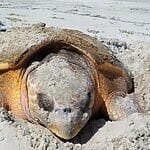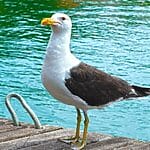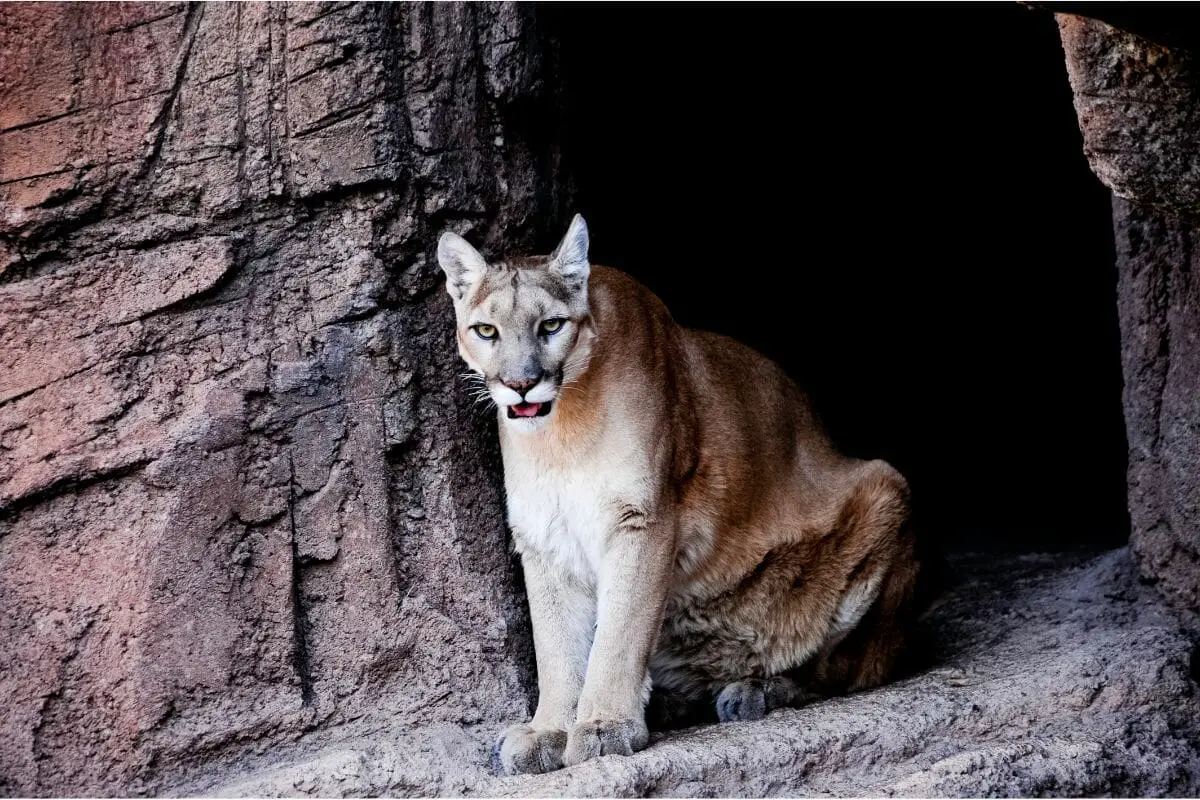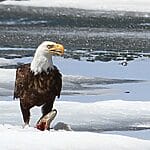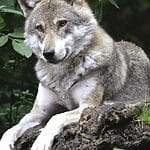11 Interesting Animals in Norway – You Might Not Know
Norway, a haven for wildlife enthusiasts, is renowned for its interesting animals and diverse ecosystems. The country’s rugged landscapes, from the Arctic north to its deep forests and coastal fjords, provide a habitat for a wide array of wildlife.
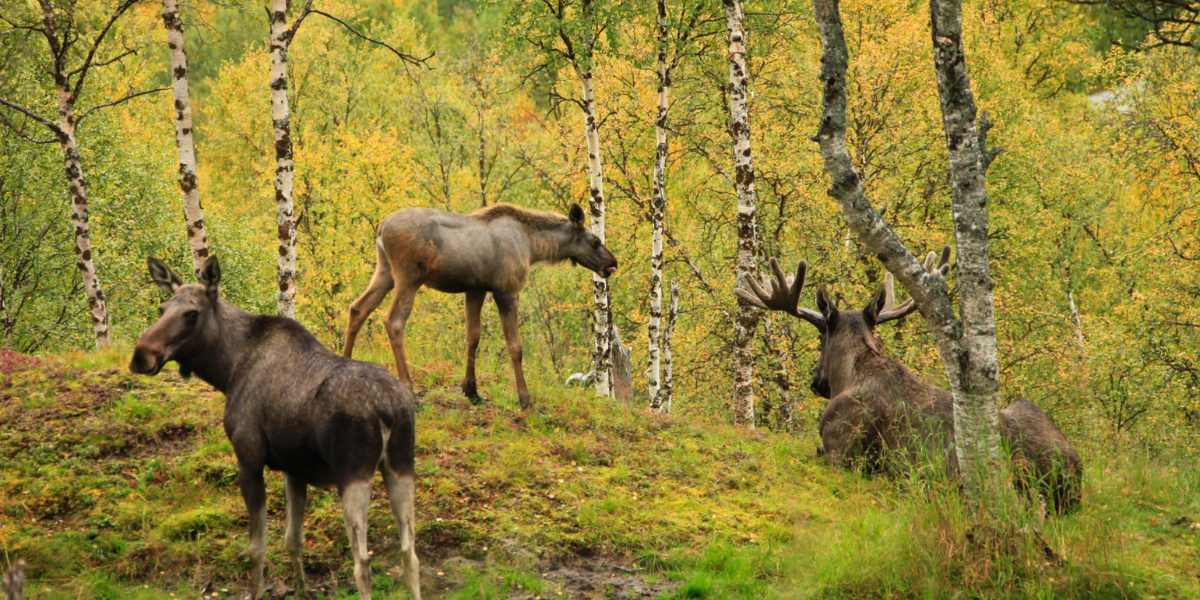
Among the wild animals found in Norway are the majestic moose, known as the ‘King of the Forest,’ and the stealthy Eurasian lynx. The national parks of Norway, like Dovrefjell, are crucial for the conservation of rare and endangered species, such as the musk ox and the Arctic fox.
In the remote Arctic archipelago of Svalbard, polar bears roam, while the coastal areas are frequented by orcas and humpback whales. Bird enthusiasts can marvel at the sea eagles soaring along the coast.
These interesting animals in Norway highlight the country’s rich natural heritage and underscore the importance of preserving its unique wildlife.
Best Places to Explore 11 Interesting Animals in Norway – (With Interesting Pictures of Norwegian Animals)
Many national parks in Norway are home to a variety of interesting animals. We have gathered the 11 most interesting animals in Norway, and the best places to spot these Norwegian animals in this blog, which will help you explore Norwegian wildlife.
Saltfjellet Svartisen National Park
Saltfjellet-Svartisen National Park, situated in the northern reaches of Norway, boasts a diverse array of wildlife against a stunning backdrop of glaciers and mountains.
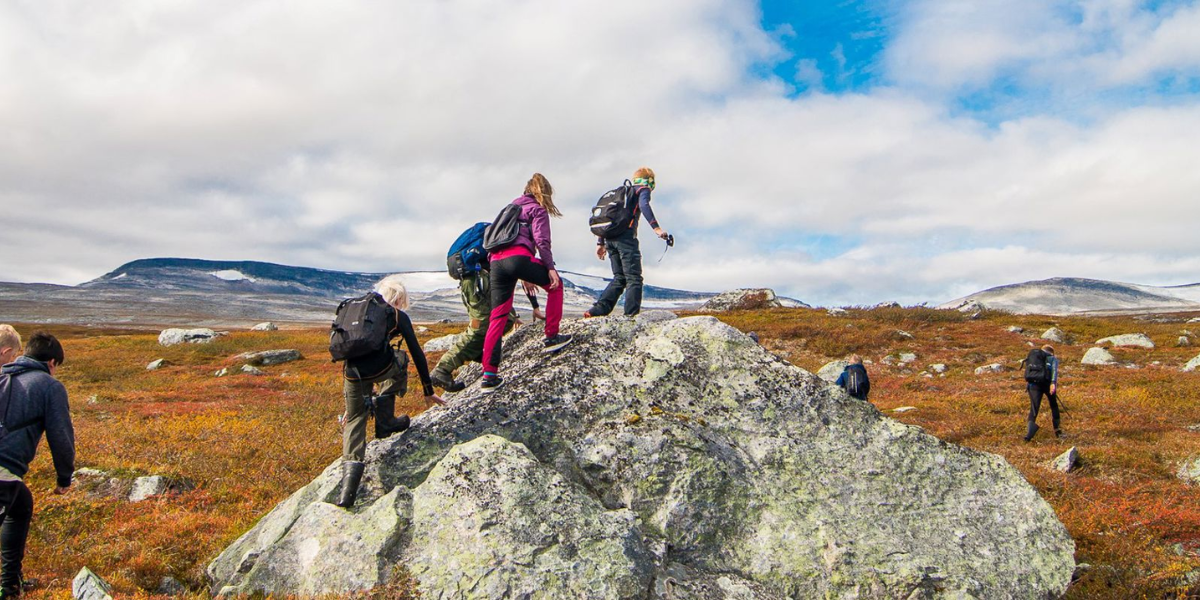
The park is home to various interesting animals in Norway like the elusive lynx, embodying the park’s untamed spirit. Another interesting species of Reindeer roam in herds freely against the backdrop of glaciers and mountains, while the Arctic fox, adapted to harsh Arctic conditions, adds to the park’s allure.
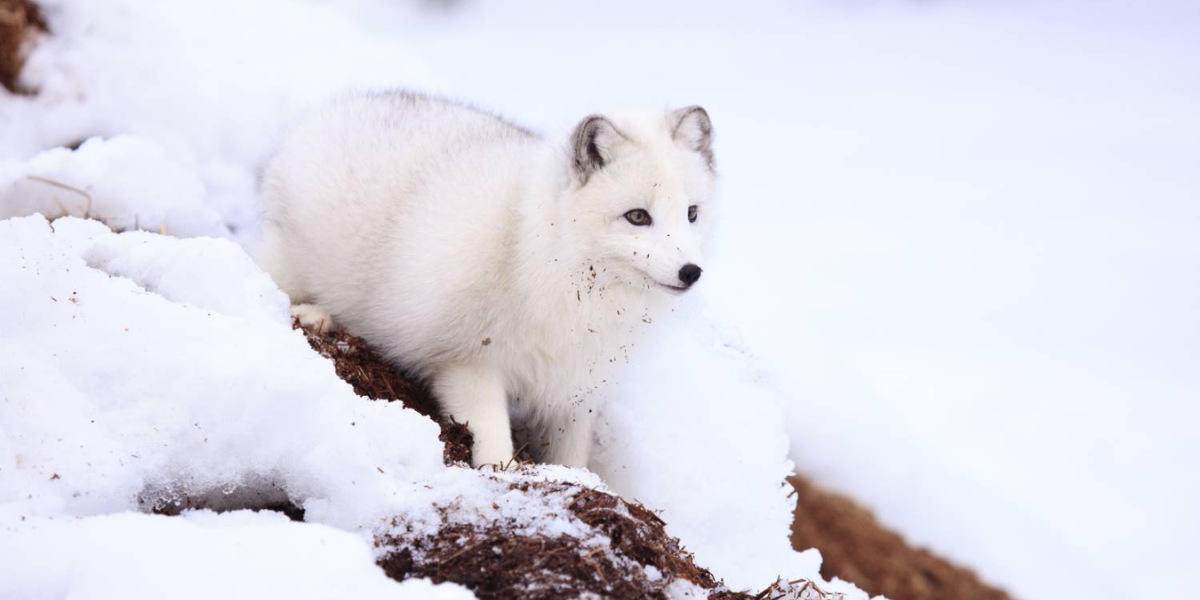
Moreover, you can also observe the Golden eagles grace the skies, adding a majestic touch to the avian population. Besides, Moose and wolverines contribute to the park’s biodiversity, creating an immersive experience for nature enthusiasts.
Tourists exploring the National Park can spot endangered, and critically endangered animals in their natural habitats. There are some crucial safety tips that tourists should follow such as respect the wildlife distances, and avoid feeding wild animals, as these animals are wild and may react defensively if approached too closely.
Wolves
Wolves are interesting animals in Norway, and primarily inhabit remote, dense forests, often roaming the Swedish border. These elusive predators are most likely to be spotted in the Østmarka area near Oslo, and within the expansive, rugged terrains of national parks like Rondane and Oslomarka.

Outside Norway, wolves are thriving in various countries across Europe, North America, and Asia, adapting to a range of habitats from the Arctic tundra to temperate forests. Their global population is estimated to be in the tens of thousands, reflecting a remarkable recovery in some regions due to conservation efforts.
The conservation status of wolves is complex, varying significantly by region. However, on the IUCN red list, these canids are classified as “Least Concern.”
Reisa National Park
Reisa National Park in Norway, spanning over 800 square kilometers, is a mesmerizing wilderness in the Troms County, renowned for its dramatic landscapes and diverse ecosystems.
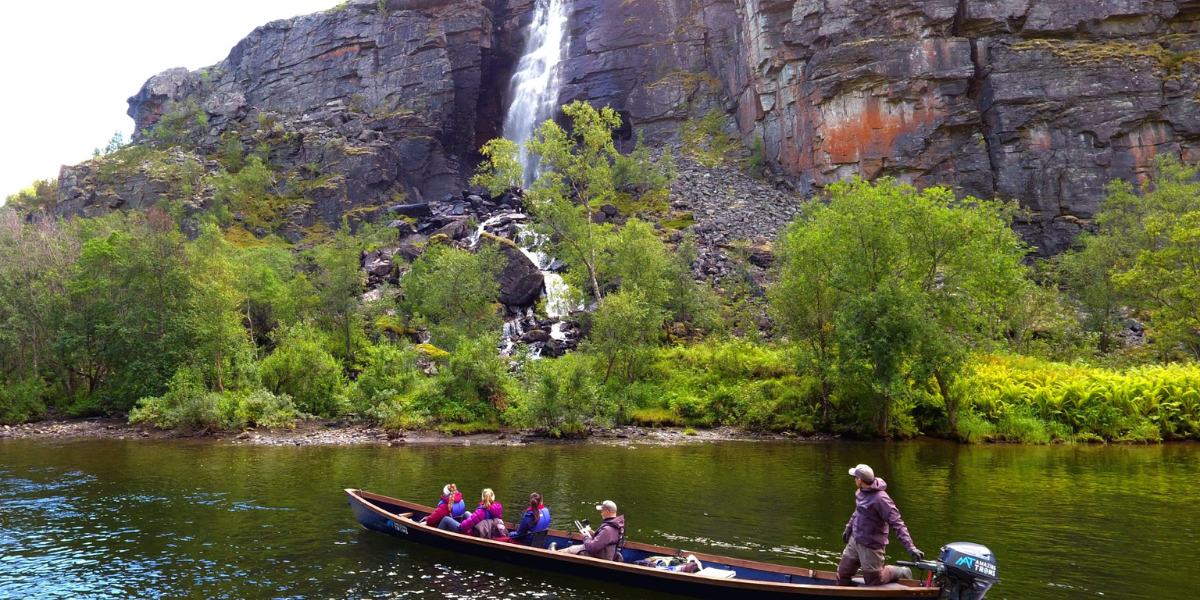
This park was established in 1986 and is famous for its deep valleys carved by the Reisa River, cascading waterfalls, and lush pine forests. It’s a haven for wildlife enthusiasts, offering sightings of species like moose, reindeer, and various bird species.
The park’s trails lead to cultural landmarks, including ancient rock carvings and Sami settlements, reflecting the area’s rich heritage. It is best place for hiking, fishing, and nature photography.
Eurasian Lynx
The Eurasian lynx, a symbol of Norway’s rich wildlife, predominantly resides in the dense forests that sprawl across the country, favoring remote and rugged terrain. Tourists keen on spotting this elusive feline might have the best chance in national parks like Øvre Pasvik National Park, which provides an ideal habitat with its extensive woodland.
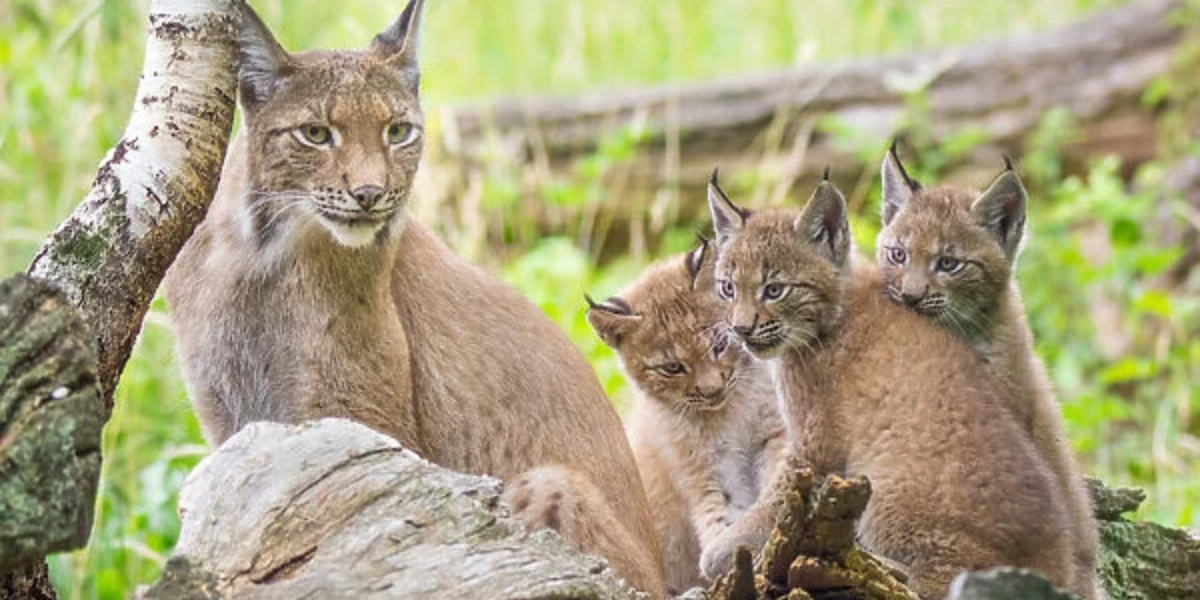
The Eurasian lynx has a broad range across Europe and Asia, thriving particularly in Scandinavian countries, the Russian Federation, and parts of Central Asia.
Historically, the Eurasian lynx faced severe threats from habitat loss and hunting, leading to its extinction in some regions. However, successful conservation efforts and legal protection have enabled a gradual recovery of their population in parts of Europe, including Norway.
Additionally, the IUCN classified them as “Least Concern”, reflecting its relatively stable and widespread population.
Borgefjell National Park
Borgefjell National Park, located in the central part of Norway, near the border with Sweden, is a magnificent display of the country’s natural splendor. This national park was established in 1963 and covers an area of approximately 1,447 square kilometers, it is one of Norway’s oldest and second-largest national park.

The park’s mesmerizing landscapes include rugged terrain, deep valleys, and numerous lakes and rivers. Moreover, it is a haven for a diverse range of wildlife, including species such as reindeer, wolverines, and golden eagles. It is also known for its unique flora, including rare alpine plants that thrive in its harsh, yet beautiful environment.
Borgefjell’s landscape is a mix of gentle, rolling hills and dramatic, steep peaks, offering breathtaking views and challenging hiking opportunities for visitors.
Arctic Fox
The Arctic fox, a small, resilient species well-adapted to the extreme cold of the Arctic tundra, is found in Norway’s high northern regions. These are interesting animals in Norway, and have thick fur, that changes in summer from brown to white in winter, providing excellent camouflage against Norway’s snowy landscapes.
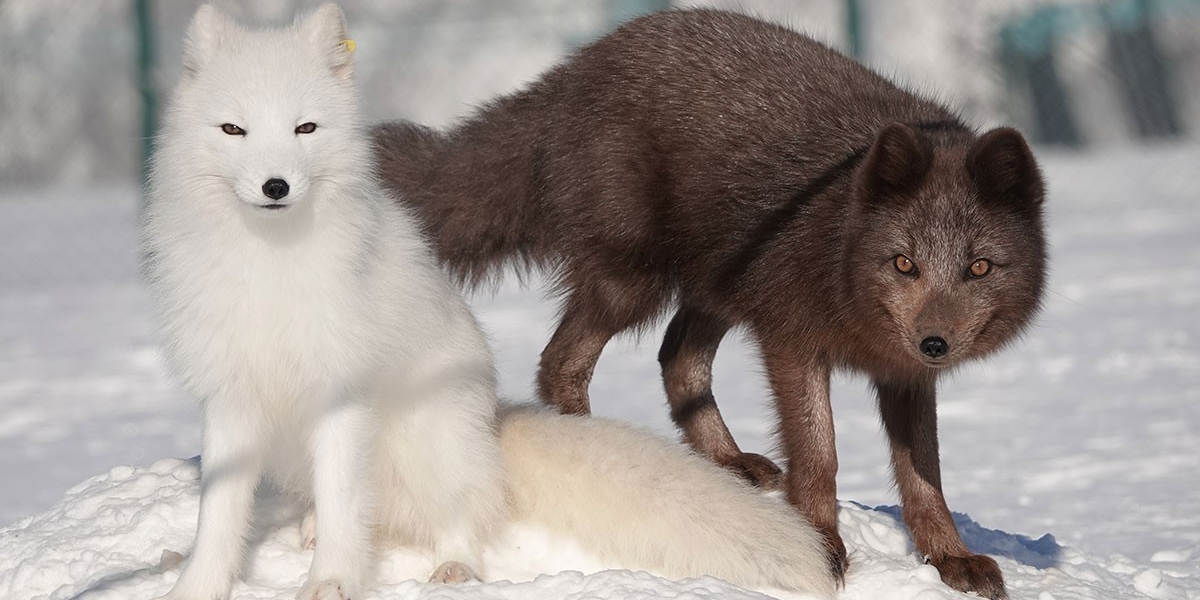
These foxes predominantly inhabit areas like the Dovrefjell-Sunndalsfjella National Park, where you can spot them roaming in their natural habitat. Beyond Norway, Arctic foxes are also found in other Arctic regions including Canada, Russia, Greenland, and Alaska.
The Arctic fox population is stable in many of its native areas, but in some regions like Scandinavia, they face challenges due to habitat loss and climate change. Fortunately, the conservation status of the Arctic fox is “Least Concern” by the IUCN, but this status varies by region.
Polar Bears – Dangerous Animals
Polar bears are interesting animals in Norway and are primarily found in the Svalbard archipelago, a region where the harsh, icy landscape forms their natural habitat. These magnificent creatures roam the vast, frozen wilderness of Svalbard, particularly in areas like the Nordaustlandet and the surrounding sea ice.
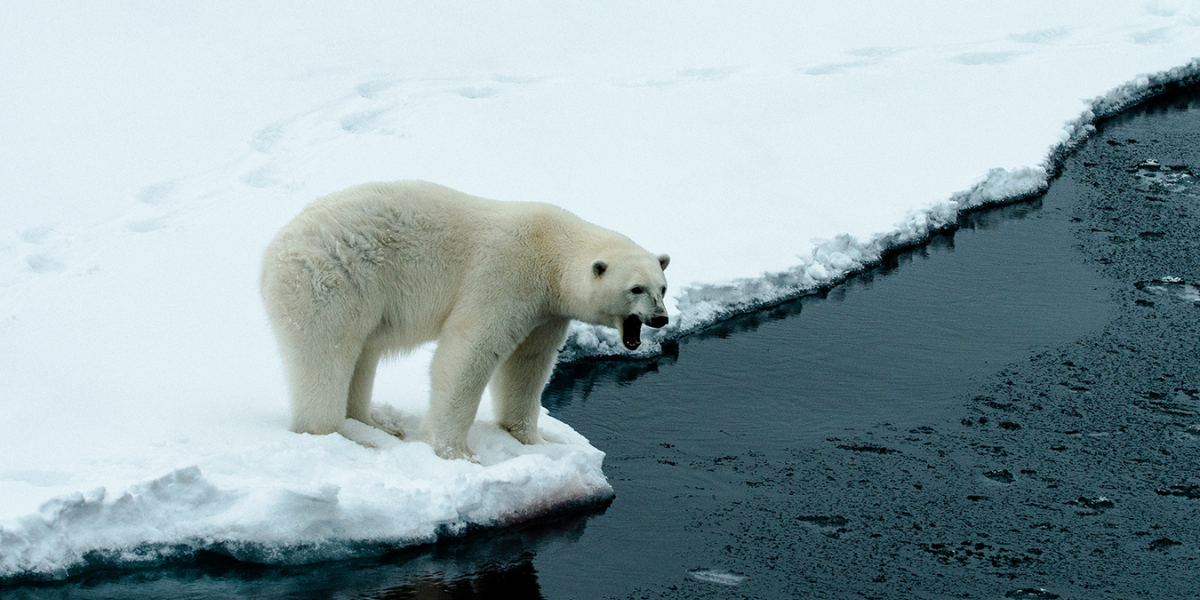
Tourists may catch a glimpse of polar bears in Svalbard’s remote regions, though always from a safe distance and under strict regulations to ensure both human and animal safety.
These are interesting animals in Norway, and also found across the Arctic regions of Canada, Russia, Greenland, and Alaska in the United States, adapting to life in frigid climates and depending heavily on sea ice for hunting seals, their primary prey.
They are facing increasing threats due to climate change and melting sea ice. Listed as a “Vulnerable species” by the IUCN. In Norway and internationally, efforts are underway to protect Polar bear’s habitats and combat the effects of global warming
Øvre Dividal National Park
Øvre Dividal National Park, located in the heart of Norway’s northern wilderness, is a pristine and remote expanse of natural beauty. It was founded in 1971 and covers approximately 770 square kilometers, it lies within Troms county, close to the border with Sweden.
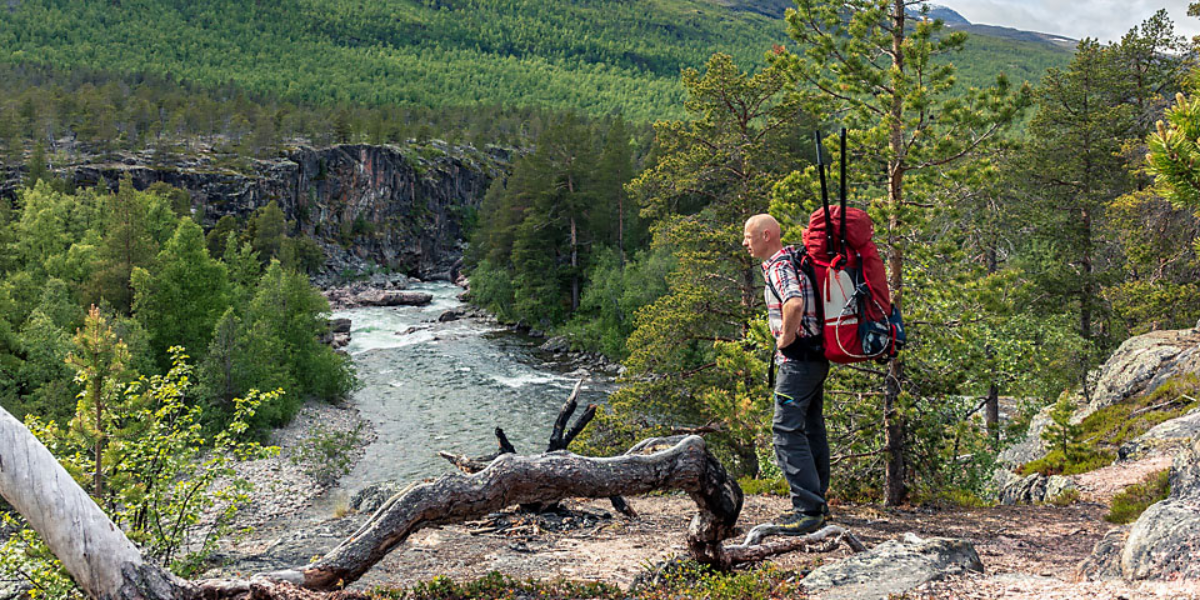
This park is a quintessential representation of the Arctic boreal forest, with its vast stretches of pine and birch woodlands, intersected by crystal-clear rivers and streams.
This national park is a haven for wildlife enthusiasts. It is home to a diverse range of fauna, including large predators like brown bears, wolves, and lynxes. Additionally, you can spot numerous interesting bird species, such as the golden eagle and the rare Siberian jay.
White-Tailed Eagle
The white-tailed eagles are interesting animals in Norway, and a symbol of power and grace, is one of Norway’s most awe-inspiring birds of prey, flourishing along the nation’s rugged coastlines, particularly in the Lofoten Islands.

This majestic raptor, with its impressive wingspan, can often be seen soaring over Norway’s national parks, such as Øvre Pasvik National Park and Varanger Peninsula. The White-tailed Eagle has a broad range, extending across coastal Europe and parts of Asia, thriving especially in countries like Scotland, Iceland, and parts of Eastern Europe.
They are one of the interesting animals in Norway that has made a remarkable recovery from near extinction in the 20th century due to human activity. Now, the White-tailed Eagle is classified as “Least Concern” by the IUCN, thanks to rigorous conservation efforts that include habitat protection and legal safeguards.
Hardangervidda National Park
Hardangervidda National Park, Norway’s largest national park, is a captivating expanse of natural beauty and untamed wilderness. Spread across an extensive plateau, the park is not only renowned for its stunning landscapes but also for its diverse and resilient wildlife.
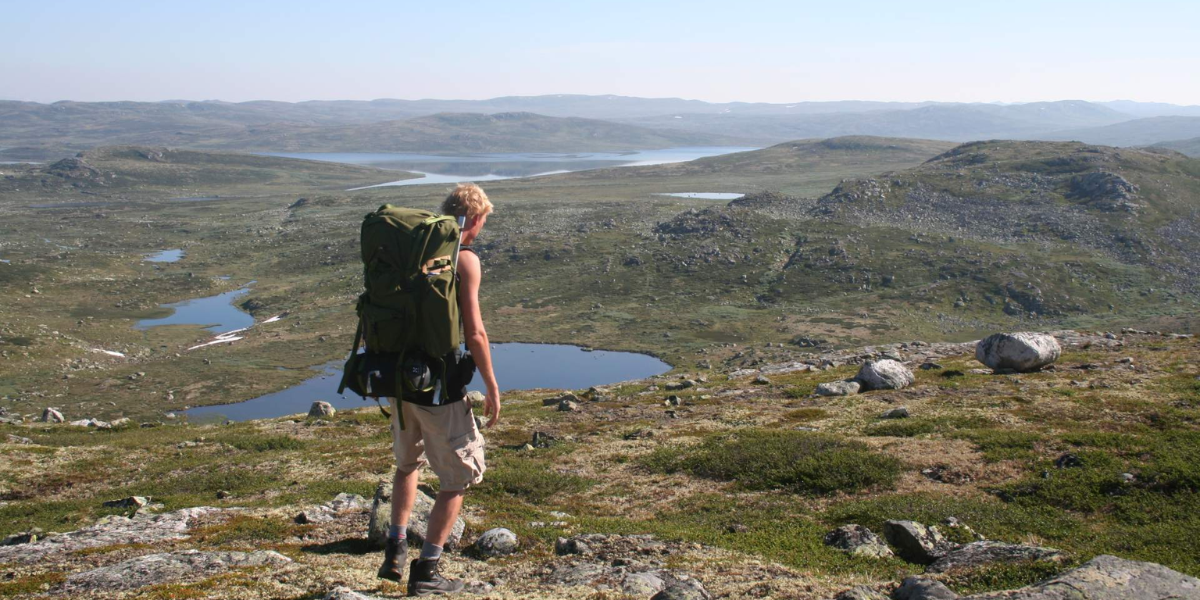
Within this pristine environment, reindeer herds roam freely, showcasing the enduring spirit of Nordic fauna. The park is also home to red foxes, lemmings, and an array of bird species, including the majestic golden eagle and the swift peregrine falcon.
The vast and varied ecosystems of Hardangervidda provide optimal habitats for these creatures, making it a crucial hub for biodiversity in Norway.
Reindeer
Reindeers are interesting animals in Norway, thriving in varied landscapes, from the deep forests to the high tundra. They are particularly prevalent in national parks like Hardangervidda, Europe’s largest mountain plateau, offering an ideal habitat with its expansive open areas and rich vegetation.
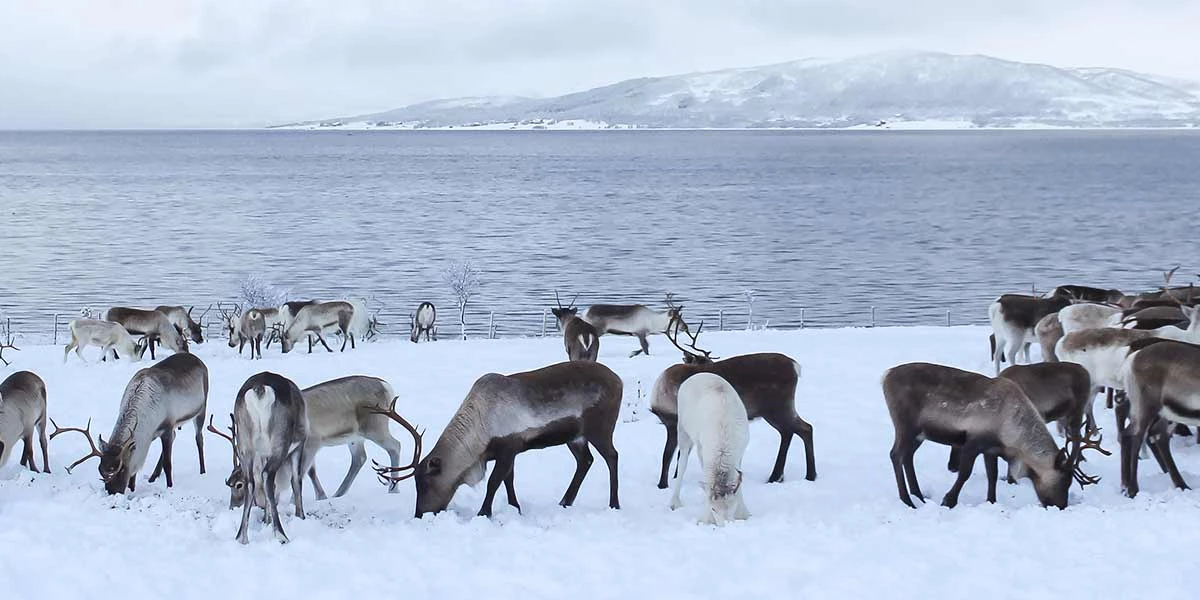
Tourists visiting these parks often have the opportunity to witness these interesting animals in their natural environment, especially during summer when they graze in large herds. Apart from Norway, reindeer are also found in other circumpolar regions, including Russia, Finland, Sweden, Greenland, and Canada.
Their conservation status varies by region, however, on the IUCN red list of threatened species they are marked as “Vulnerable Species.” Unfortunately, they are facing challenges due to habitat loss, climate change, and human interference.
Interesting and Dangerous Sea Animals in Norway
Norway’s coastal waters teem with a interesting array of sea life, combining both intriguing and potentially dangerous species. The frigid North Atlantic harbors creatures like the fearsome killer whale and the enigmatic giant squid, contributing to the region’s marine allure.
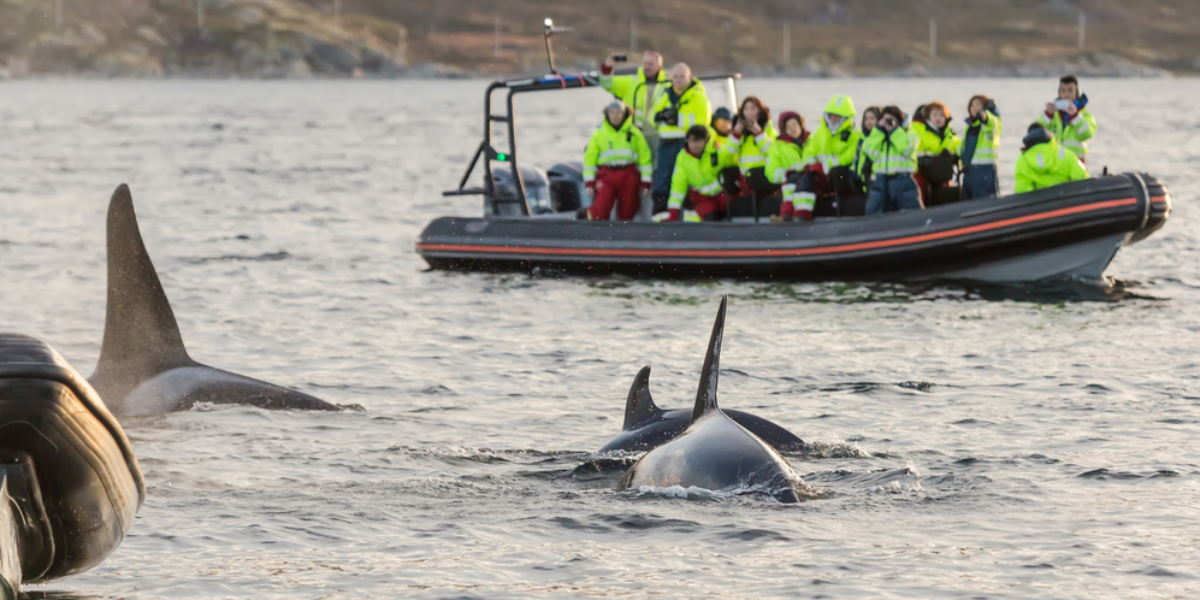
However, there are many interesting, and dangerous sea animals in Norway, some of them are mentioned below.
Humpback Whales – Dangerous Animals
Humpback Whales, known for their majestic breaches and haunting songs, are a spectacular sight in the coastal waters off the northern Norway.
Humpback Whales are one of the interesting animals in Norway, however not typically found within national parks. But you can spot them at Troms and Finnmark, especially during winter when humpbacks congregate to feed on herring.
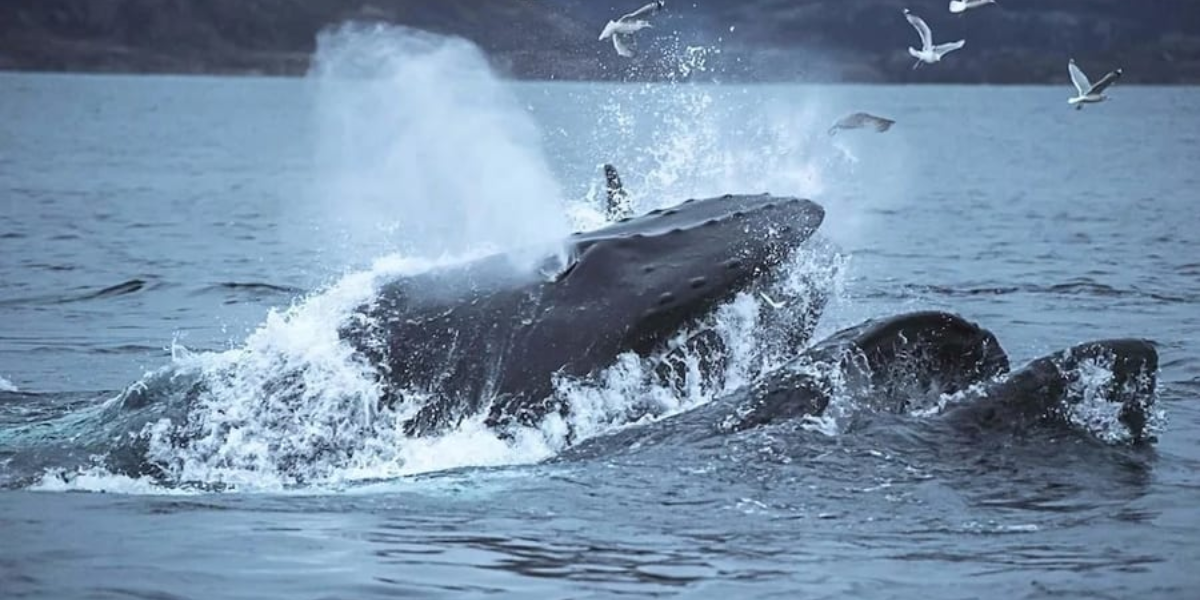
Humpback Whales have a global distribution, inhabiting all major oceans, from the polar to the tropical regions. They are especially prevalent in feeding grounds like the Antarctic, the North Atlantic, and the North Pacific, migrating to warmer waters for breeding.
These whales are classified as “Least Concern” by the International Union for Conservation of Nature(IUCN). However, they continue to face threats from entanglement in fishing gear, ship strikes, and the impacts of climate change on their feeding grounds. Conservation efforts and international regulations, including marine protected areas and strict whale-watching guidelines, are crucial for ensuring continued survival.
Killer Whales
Killer whales, or orcas, are a spectacular sight in Norway, particularly famed for their appearances in the coastal waters, especially during the winter months when they follow herring migrations.
These majestic marine mammals, known for their distinctive black and white coloring, are most commonly spotted in the frigid waters off the coast of Northern Norway, including areas around the Lofoten and Vesterålen archipelagos.
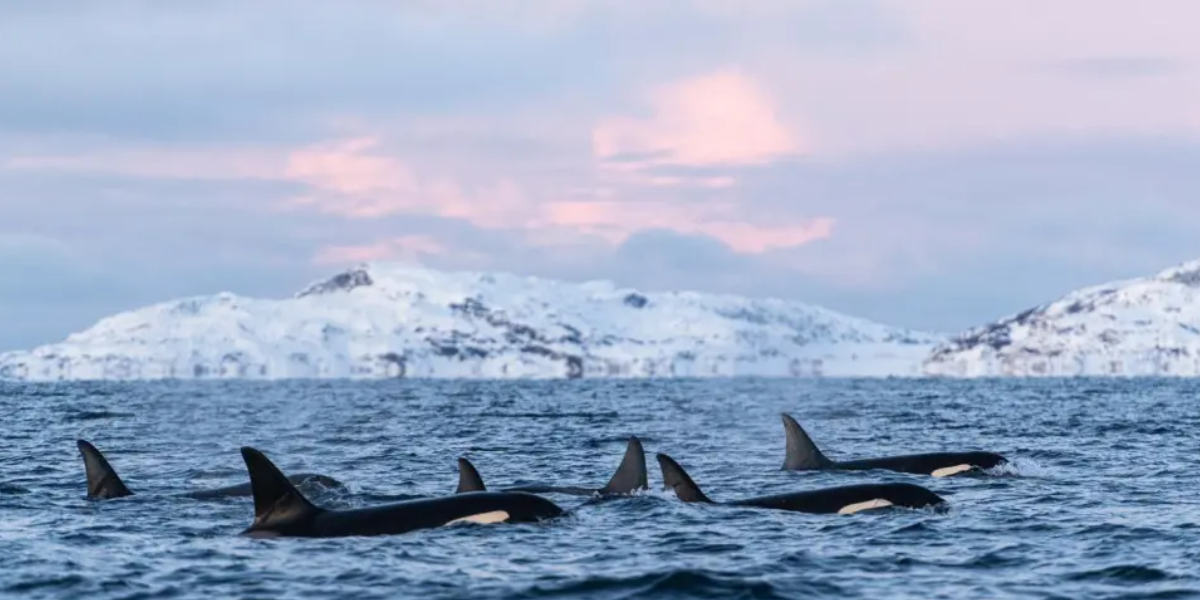
Killer whales are distributed widely, from the polar regions to the equator, thriving in various marine environments including the Pacific and Atlantic oceans. The conservation status of killer whales varies depending on their location and specific populations.
While the IUCN Red List categorized them as “Data Deficient,” speciesmeaning there is insufficient information to make a direct assessment of their risk of extinction. However, some populations are known to be threatened by factors like pollution, depletion of prey species, and habitat disturbance.
Pilot Whales
Pilot whales are interesting animals in Norway. These whales are a frequent sight in Norway’s coastal waters, particularly around the Lofoten Islands and Vesterålen. These regions, with their deep fjords and rich marine life, provide an ideal habitat for pilot whales, where they can be often spotted hunting for squid and fish.
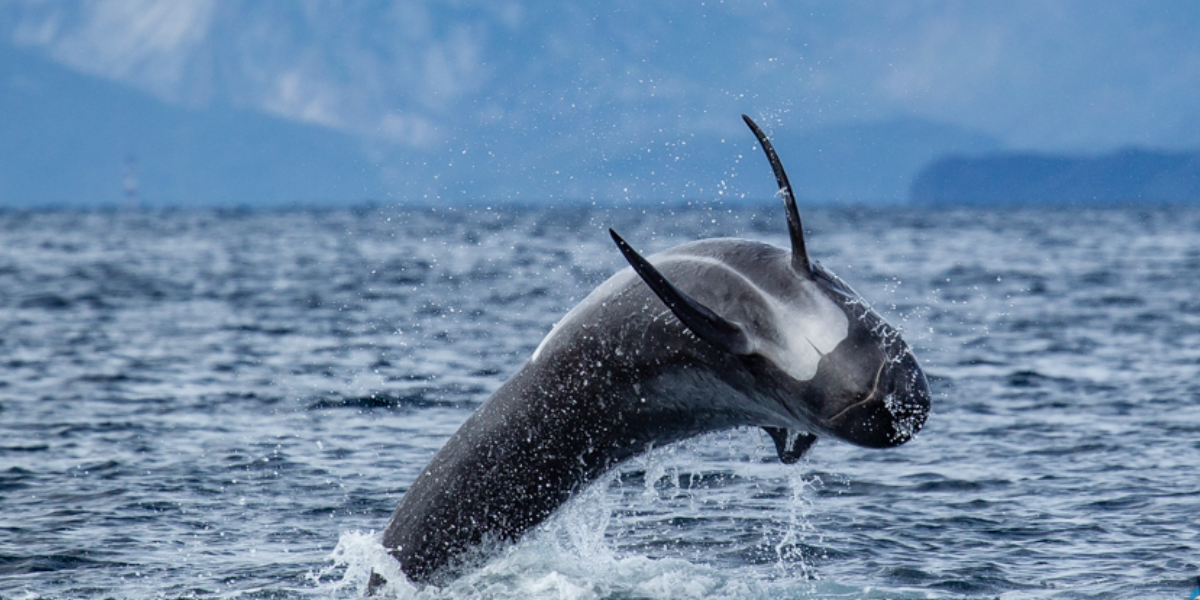
The protected marine areas of Norway offer excellent opportunities for tourists to observe these magnificent creatures in the wild, often through guided boat tours. Pilot whales are found in both the Northern and Southern Hemispheres, thriving in various oceanic environments.
The conservation status of pilot whales is “Data Deficient” on the IUCN red list of threatened species. It means there is insufficient information to make a precise assessment of their risk of extinction. However, they face threats from bycatch, pollution, and climate change, which can impact their food sources and habitat.
Sperm Whales
Sperm Whales, the largest toothed predators on Earth, are a significant part of Norway’s marine ecosystem. Predominantly found in the deep waters off the coast, especially around the Lofoten and Vesterålen islands.
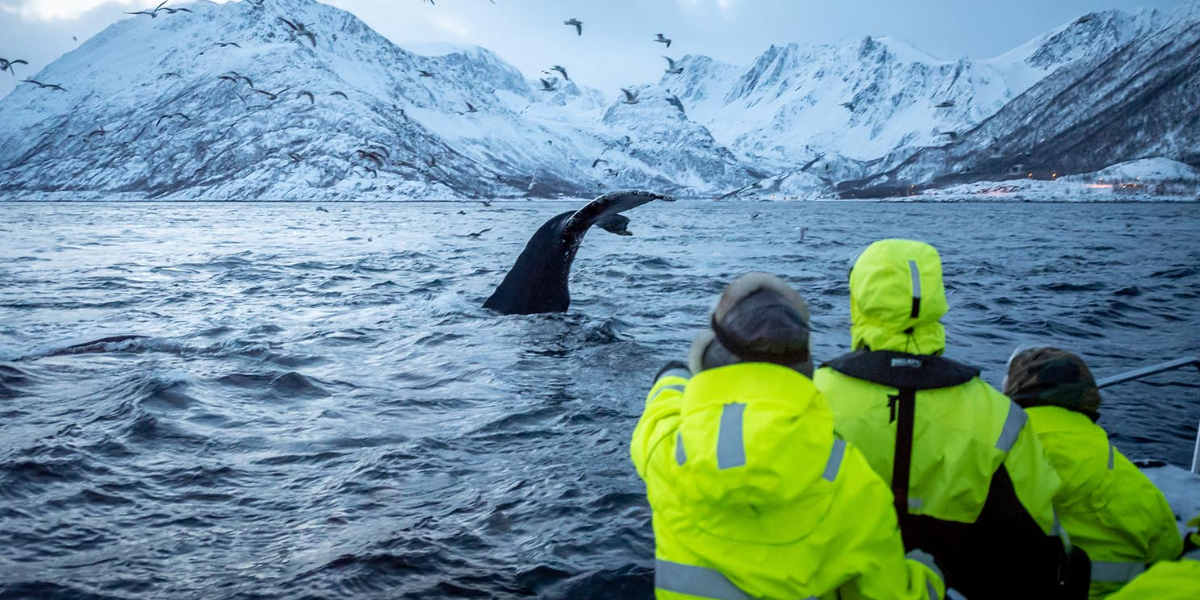
These coastal regions act as prime spots for whale-watching tours, offering tourists a chance to witness the Sperm Whales in their natural habitat. These interesting animals in Norway are found in a variety of marine environments, from the equatorial regions to the edge of the polar ice in both hemispheres.
They are particularly abundant in the Pacific, Atlantic, and Indian Oceans. Additionally, the Sperm Whales face threats from human activities, including ship strikes and entanglement in fishing gear. The International Union for Conservation of Nature (IUCN) listed the Sperm Whale as “Vulnerable,” reflecting the species’ ongoing challenges.
Moose – National Animal of Norway
The Moose, Norway’s national animal, is a symbol of the country’s rich, wild landscapes. These majestic creatures, are the largest of all deer species. They are predominantly found in the dense forests of Norway, thriving in habitats that offer abundant food sources like young shoots from trees and shrubs.
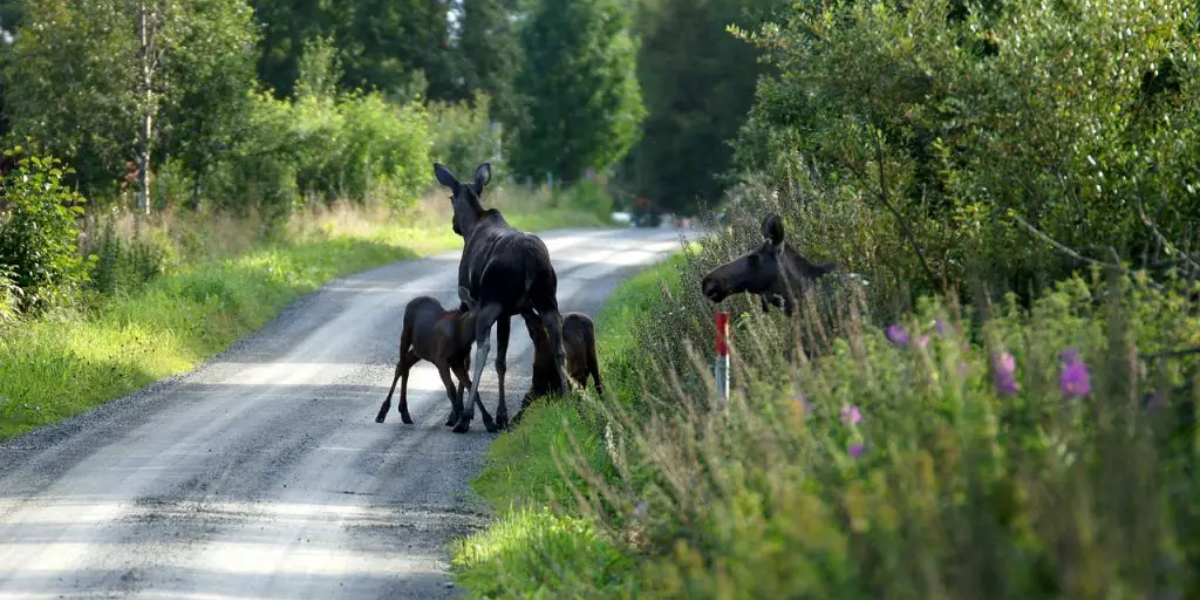
Adult moose are impressive in size, with males (bulls) easily recognizable by their large antlers, which they shed annually. Despite their size, moose are surprisingly agile, and capable of moving swiftly through dense forest terrain.
Endangered Animals in Norway
Several Norwegian animals are facing threats of endangerment, emphasizing the need for conservation efforts to safeguard the country’s diverse ecosystems. We have listed some interesting animals in Norway that fall under the category of “Endangered animals.”
The Arctic Fox: Native to Norway’s northern reaches, faces threats from habitat loss and competition with the red fox. The Norwegian mountainous ecosystems are home to the Arctic reindeer, whose numbers are dwindling due to climate change and human activities.
The European Mink: Found in Norwegian waterways, is also critically endangered, primarily due to habitat destruction and invasive species.
The Atlantic Salmon: A significant species for both ecological and economic reasons, confronts threats from pollution, overfishing, and habitat degradation
The Gyrfalcon: A majestic bird of prey, faces challenges such as pollution affecting its prey base and disturbance to its nesting sites.
Frequently Asked Questions about Interesting Animals in Norway
What animals are unique to Norway?
Arctic foxes, Reindeer, Polar bears, and White-tailed eagles, are some unique and interesting animals in Norway.
What is Norway’s royal animal?
Norway’s royal animal is the Lion.
What is the largest animal in Norway?
The largest land predator in Norway is the polar bear.
What’s the national animal of Norway?
Moose is the national animal of Norway.


